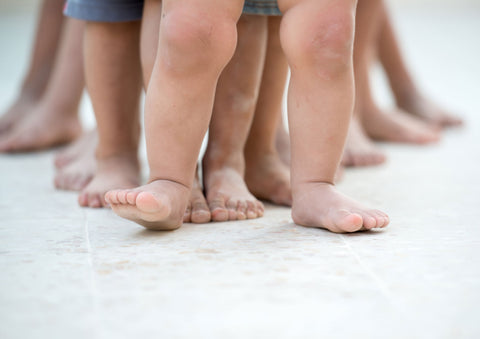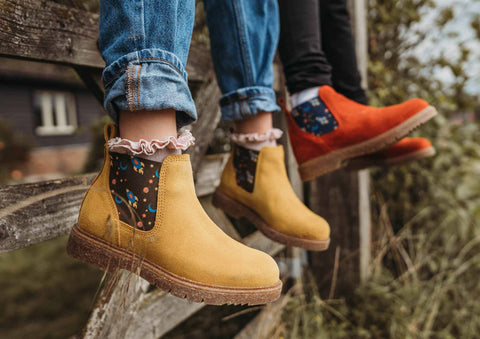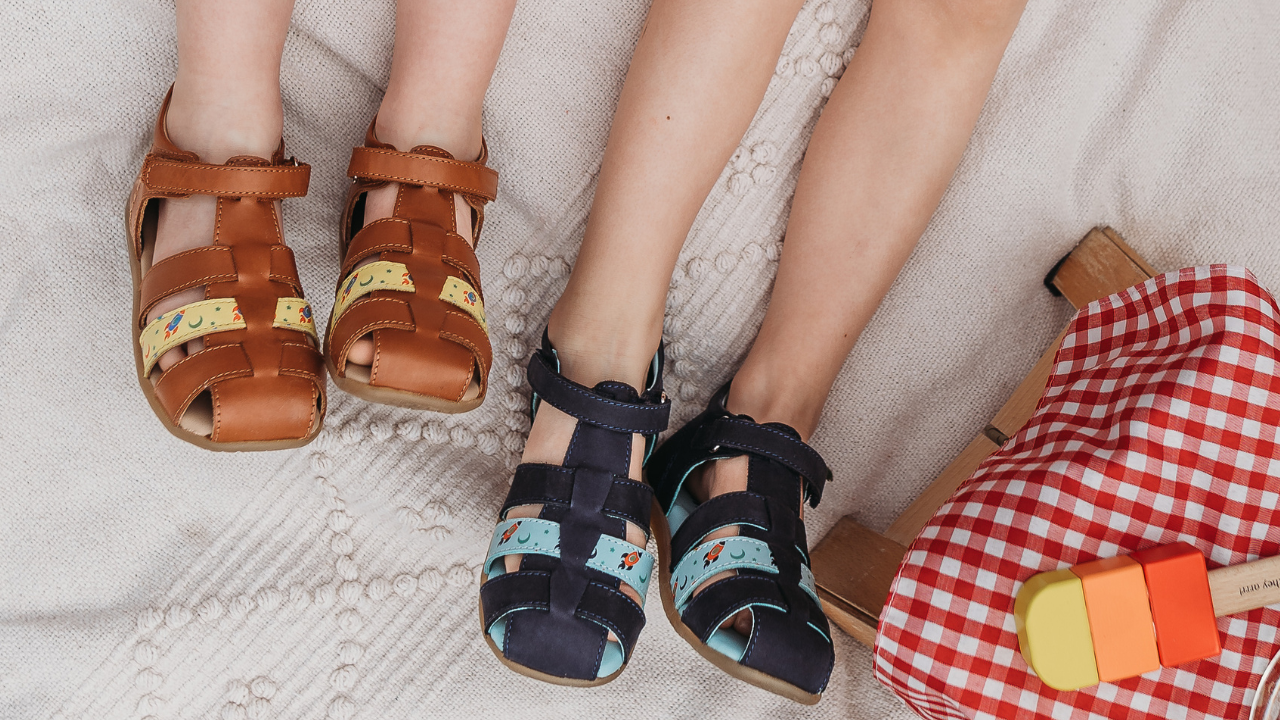The Importance of Podiatrist-Approved Shoes for Your Little Ones
Let's talk about something that might not be on the top of your parenting checklist but is certainly important: your kiddos' shoes. Yep, those little things that keep their tiny toes protected as they conquer the world one hop, skip, and jump at a time. But why are podiatrist-approved shoes worth the hype? Well, let's dive in!
First things first, picture this: your little explorer embarking on a grand adventure through the backyard jungle. They're dodging fallen leaves, scaling small hills, and maybe even attempting to break the land-speed record for a three-year-old. Now, imagine them doing all of this in shoes that are more suited for a runway than a playground. Ouch, right? That's where podiatrist-approved shoes swoop in to save the day!
Now, I know what you might be thinking, "But aren't all shoes made the same?" Oh, how I wish that were true. The main purpose of podiatrist-approved shoes is that they not only provide comfort and support, but also promote healthy foot development. Here at Pip and Henry, we have teamed up with clinical director, podiatrist, blogger, and foodie, Tracy Byrne from Holistic Health Hackney. We have worked closely with Tracy over the last couple of years to create a range of children's shoes that are not only good for the environment, but good for overall foot health too. In Tracy's words, here is a deep dive into the in's and outs of those little feet and the shoes we put on them.
The developmental stages of children’s feet
Unlike earlier hominids and other great apes, our early ancestors evolved to have rigid ankles, arched feet, and a big toe. These changes made it easier to walk on two feet, climb and tackle difficult terrain. Our feet, while comparatively stiff, are still remarkably flexible. The foot still retains some of the elasticity that goes along with hopping between branches and after so many thousands
of years of evolution; we still have feet that are ready for climbing. This is because that same flexibility is needed for walking or running over irregular terrain.
The human foot combines mechanical complexity and structural strength. The foot is roughly divided into three sections: the hind foot or heel, the mid-foot and the forefoot and toes. Each foot has 28 bones, 33 joints, 19 muscles, over 100 ligaments and thousands of nerve endings and includes a complex network of blood vessels, skin, and soft tissue. The sole and tips of our feet have 200,000 nerve endings connecting us to the world and helping us
balance. The stimulation is a connection from foot to body and foot to brain.
The ankle serves as your foundation, shock absorber, and propulsive engine.
The purpose of the foot is to provide support, balance, and mobility to the body. Problems with the feet can result in the development of problems elsewhere in the body as imbalances ascend through the kinetic chain. A child’s foot is triangular in shape and wide at the toes. At birth, feet are mostly cartilage, which is gradually replaced by bone. This process isn’t complete until age 18-19 for girls and 20-21 for boys. If the cartilage is deformed during these early years by badly shaped or rigid shoes, problems can occur later in life and any interference with the growth of the growing bone or muscle can throw the foot out of balance resulting in poor muscle tone and foot development. By the age of 21 the foot has fully developed to contain a complex structure consisting of 28 bones.
The function of the toes, especially the big toe, is to help us balance, and to propel us forward during gait (walking and running). The height of your arch and the shape of the toes will change throughout your lifetime. Irreversible damage can occur when wearing the wrong shoes during childhood. In their first year, a babies foot grows around three whole sizes, or 25mm; between the ages of one and five years, it grows about two whole sizes (18mm) each year. And from the age of five, right up until their mid-teens, feet continue to grow at around a whole size (8mm) each year.
Once a baby has learnt to sit up on their own, the first stage in their walking development is crawling. Some babies begin by balancing on their hands and knees before pushing themselves along with their legs. Others prefer to shuffle on their bottoms, before sitting upright, bending their knees and taking off. The second stage, called cruising, is when baby might use the furniture, a toy or your knee to pull themselves up. When they feel steady, they will slide one hand to their side whilst moving one foot and then the other, always keeping three points of contact to help them stay upright. And once they begin to grow in confidence, they will let go and totter towards the next support.
Most children learn to walk aged between 10 and 18 months. It all depends on the development of the muscular strength and coordination needed. Don't worry if it takes your child a little longer. All children are different and they need to develop at their own pace – do not rush this important development stage. When they do take their first unaided steps, they will walk very differently from a grown-up. Their feet will be wide apart and point outwards. There will be no flexing of the knees or ankles. They will take short stamping steps, which reverberate, making them quite unsteady, and they will hold their arms out to keep balanced.
Medial longitude arch develops throughout the first decade; however rapid growth is seen between 3 and 5 years. Babies appear to have flat feet because of the thick layer of baby fat present in every infant’s arch, which is normal and necessary. From this fat, baby’s muscles and bones absorb nourishment as they grow. It starts disappearing late in the third year, but until then every baby normally has low arches. Additionally when a baby first starts to walk, he stands with his feet pointed out in a fallen arched manner in order to balance himself. For a toddler this is normal. When a few months later, he acquires strength (if his feet and toes have not been weakened and distorted by ill fitting shoes) he will by himself abandon the fallen arched gait and stance.
Children are also born to run naturally – with correct forward foot strike, fast cadence, perfect rhythm and posture. At around the age of two, children walk with a flat-footed stomp. Their hip joints will have rotated, so their feet and knees will now point forward. And they won't need to use their arms to balance anymore. At four years old they may still seem a little flat-footed, but they will be developing a heel-to-toe walking style. Their knees and ankles will flex naturally, making their movement smoother than before, though they will find changing speed or direction difficult. They will also be getting to grips with running and jumping. Throughout this period, they need shoes which are flexible enough to let their movement develop naturally.

Shoes – What have they done to us
Podiatrists spend their entire professional career treating foot pathologies caused by footwear. The majority of the population who wear shoes habitually continue to acquire them permanently and unnecessarily deformed feet simply because of the evolution of a fashion which started hundreds of years ago.
The seeds of foot trouble were first sown, however, in the Renaissance when the elevation of the heel-the first characteristic of modern deforming footwear came into use. The elevated heel that followed left the fore part of the foot on the ground and raised the heel, forcing the foot into a completely unnatural position. Perpetual wearing of high heels causes shortened calf muscles, and an inability to use the metatarsophalangeal joint at the big toe leading to hallux limitus, rigidus, and valgus often leading to surgery. As children, our movement is naturally correct, but through a combination of cushioned soles and poor postures, we have developed bad movement habits that have made us inefficient and injury-prone.
Dr. Lee Bivings, a pediatrician from Atlanta, estimates 99% of newborn babies have perfectly normal feet – and in his clinic more than 60% of these same, shoe-wearing babies have acquired foot disabilities by age six. More than 80% of foot problems, bunions and injuries develop or are exacerbated as a direct result of misshaped and inflexible shoes. If the cartilage in a child’s developing foot is deformed by badly shaped or rigid shoes, the bone will take on the deformed shape as it develops. In his paper entitled ‘The role of impact and foot pronation’, Benno M. Nigg of the University of Calgary he states that “shoes alter your perception of the ground, this can be due to the weight of the shoe being positioned at the back, making you heel strike, or due to the shoe being too narrow, rigid and inflexible, creating tension in the foot”.
Misleading shoe sizes also means we are inadvertently wearing the wrong-sized shoes, risking serious long-term damage to their feet and joints. The problem of ‘insufficient length” in footwear causes foot damage, which can easily go unchecked. Inflexible, poorly shaped shoes are harmful and will restrict natural movement and development of the foot. Gordon Watt, consultant paediatric podiatrist at Glasgow Caledonian University, said the problems that could arise from ill-fitting shoes ranged from minor pressure marks and blisters to more worrying deformities and problems with gait and posture. Shoes that are incorrectly shaped or shoes that have been outgrown deform the toes and foot right up until the foot matures between the ages of 18-21.
In ‘Shoes for Small Fry; What footwear is best for growing feet?’ Jay Dicharry states “In addition to shoes that bind the foot and change its shape, we typically put kids in shoes that are too stiff to allow natural flexion. Typical running shoes are produced for a man weighing 150-plus pounds and a woman weighing 130 pounds or more. Many of the same materials are used in the construction of shoes meant for kids who weigh just a fraction of that, and the smaller physical size means that all that stitching and those material attachment points lead to a much stiffer and more rigid shoe than the adult versions. Kids don’t have the physical weight to flex these shoes”.
Is this a problem? Yes. The foot is designed to move. And that movement helps strengthen the muscles, which in turn impact the changes in our natural alignment throughout our development.” The toe box area of the ballet shoe must match the shape of the foot in order to prevent bunions. Anti-inflammatory medication and gel-like separators between the toes will also relieve suffering. Confining your feet in shoes and socks allows sweat and bacteria to build up, in turn causing stronger and more persistent odour, so wearing sandals alone will help to reduce the problem. Bunions (painful enlargement at the joint of the base of the big toe) and hammertoes (buckling or abnormal contraction of a toe) are accelerated by ill-fitting or excessively high heels. inward (again to stop the flip-flop from, falling off). This can lead to serious sole, heel, ankle and even hip problems. You are very prone to trips and falls because of the flip-flop’s inability to hold the shoe on your foot.
So where can I buy podiatrist approved shoes for my child?
At Pip and Henry we have worked extremely hard to create gorgeous footwear that is great for the environment and brilliant for growing feet. From boots, to sneakers to sandals, we have spent hours upon hours perfecting each design to become masters of our trade. So say goodbye to wonky arches and pesky blisters; these shoes have got your back (or should I say, your feet?).
And let's not forget about style! Who says practicality can't be fashionable? Podiatrist-approved shoes come in all shapes, sizes, and colours, ensuring that your little trendsetter can strut their stuff with confidence. Whether they're into sparkles, superheroes, or dinosaurs (because who isn't?), there's a pair of podiatrist-approved shoes out there just waiting to be rocked by your mini-fashionista.

Recycling your kid's outgrown shoes.
We have taken our designs one step further and introduced a Shoe Recycling Scheme! According to the Dover District Council, every year over 300 million pairs of shoes are thrown out by the public in the UK, with the majority going to landfill.
We know kids outgrow shoes quickly! Most of the time we are left grappling with no idea how to dispose of them responsibly. As part of our commitment to environmentally friendly and sustainable production, we offer a free and easy-to-use shoe recycling service for all shoes and in return, you get £10 off your next Pip & Henry order.
There are 2 ways you can send us back your old outgrown shoes.
1. Use our online recycling portal:
We have created an easy-to-use online recycling portal.Simply click the button below and follow the steps provided. Once you have completed the prompts, package up your old shoes, print out the shipping label, and leave your shoes at your nearest Evri parcel shop. (Shipping costs are covered by Pip & Henry) Your £10 voucher will automatically be sent to you once we have received your items.
We accept all shoes no matter the brand, size, or condition. However, we do ask that you please make sure they are clean and dry before posting.
You can access our online portal in the link below:
https://pipandhenry.com/apps/trade-in#/product-registration
2. Leave your shoes at any of our recycling drop off locations:
You can leave your old, outgrown shoes ant any of the shoe recycling drop-off locations below:
1) Gymboree (Children's Developmental Play Centre)
East Dulwich, Kensington, Sevenoaks, Tunbridge Wells, Putney, Cheam
2) Little Street (Children's Role Play)
The Square, Riverhead, Sevenoaks TN13 2AB
3) Minor Mania (Children's Play Centre)
Business Court, Units 2 & 3, Bells Yew Green, Tunbridge Wells TN3 9BJ
All You Need To Do Is:
- Gather Those Shoes: Check those closets, under the beds, and wherever those little feet have left their old, outgrown shoes. (We accept any children's shoes no matter the style, condition, or brand)
- Visit Our Drop-Off Points: Find the nearest drop-off location and look for the Pip & Henry Shoe Recycling box.
- Drop And Scan: Drop your shoes into the recycling box and scan the QR Code! You will receive your £10 voucher on the spot... IT'S THAT EASY!
So, dear parents, the next time you're on the hunt for the perfect pair of kicks for your kiddo, remember the golden rule: happy feet, happy kids! Invest in podiatrist-approved shoes, and watch as your little ones conquer the world one comfortable step at a time. After all, life's too short for sore feet and boring shoes!





